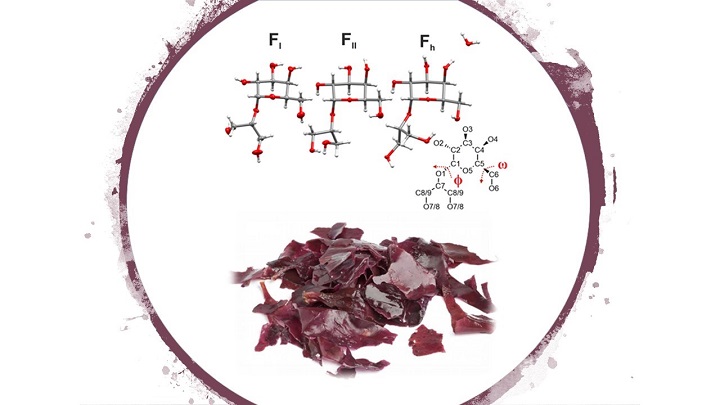New crystal forms from red algae
Applying circular economy principles to resource recovery from red algae has revealed two unforeseen crystal forms of floridoside – an intriguing natural product.
Floridoside (2-α-O-D-galactopyranosyl glycerol) is an important, naturally-occurring glycerol glycoside biosynthesised by most species of red algae. Within these organisms, floridoside has been implicated as an intracellular regulator of various fundamental functions. Most notably, floridoside helps control osmotic pressure – it’s accumulation in cells can effectively counteract high external solute levels that would otherwise cause loss of water from the cells. This is important for algae which live in high salt environments.
Floridoside is often considered a so-called ‘compatible solute’ and represents a less-detrimental method of adapting osmotic pressure compared with alternative approaches such as accumulation of inorganic salts, metabolically disruptive solutes, or abrupt changes in cell volume. This, and its other properties, make it of interest for a range of applications.

The new crystal structures of floridoside (FII and Fh), as extracted from red algae, are displayed alongside the known structure (FI)
In their new work, Dr Avtar Matharu (link: https://www.york.ac.uk/chemistry/staff/academic/h-n/amatharu/) and co-workers report previously unforeseen crystal forms of floridoside: an anhydrous polymorph (FII) and a crystalline stoichiometric monohydrate (Fh). This work advances the characterisation of this important natural biomolecule, could help facilitate its use in a variety of applications and help understanding of its role in vivo as a ‘compatible solute’. Importantly, the researchers noted that the physicochemical properties of the new crystal polymorphs were significantly different to those of the known polymorph.
Dr Matharu said: “My final year PhD student, Andrew Maneffa, was pivotal in isolating floridoside from algae. His thoroughness and attention to detail meant he was able to identify two new forms of floridoside – one of them completely unheralded.
The development of circular economies based on renewable resources is a key strategy for sustainable development. Fully understanding what Nature already provides us with is very important for many industrial applications”.
The research is published open access in Communications Chemistry: https://www.nature.com/articles/s42004-020-00376-z